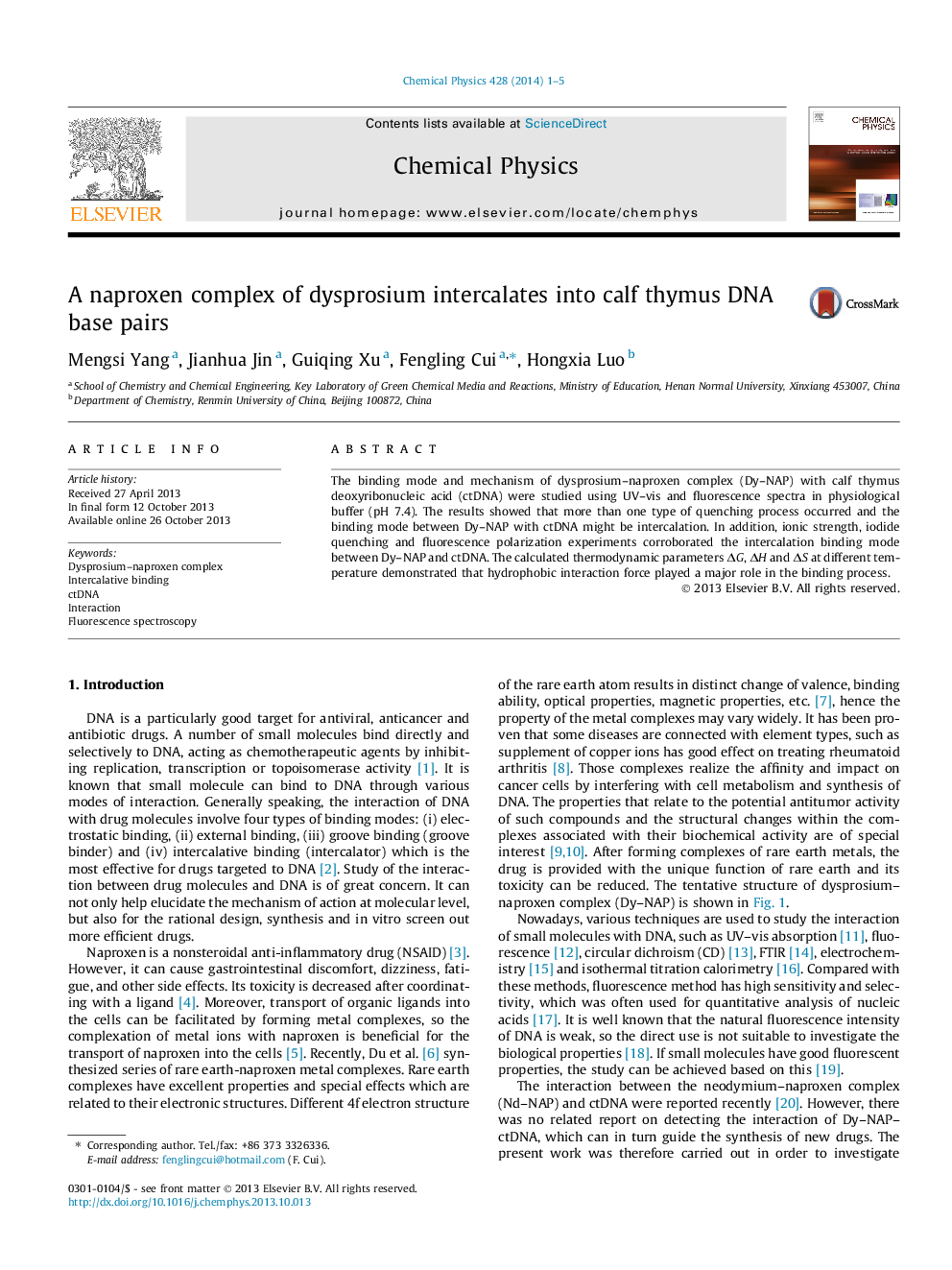| Article ID | Journal | Published Year | Pages | File Type |
|---|---|---|---|---|
| 5373723 | Chemical Physics | 2014 | 5 Pages |
â¢Binding mode to ctDNA was studied by various methods.â¢Intercalation is the most possible binding mode.â¢Dynamic and static quenching occurred simultaneously.â¢Hydrophobic force played a major role.â¢Binding characteristic of rare earth complexes to DNA are dependent on the element.
The binding mode and mechanism of dysprosium-naproxen complex (Dy-NAP) with calf thymus deoxyribonucleic acid (ctDNA) were studied using UV-vis and fluorescence spectra in physiological buffer (pH 7.4). The results showed that more than one type of quenching process occurred and the binding mode between Dy-NAP with ctDNA might be intercalation. In addition, ionic strength, iodide quenching and fluorescence polarization experiments corroborated the intercalation binding mode between Dy-NAP and ctDNA. The calculated thermodynamic parameters ÎG, ÎH and ÎS at different temperature demonstrated that hydrophobic interaction force played a major role in the binding process.
Graphical abstractDownload full-size image
